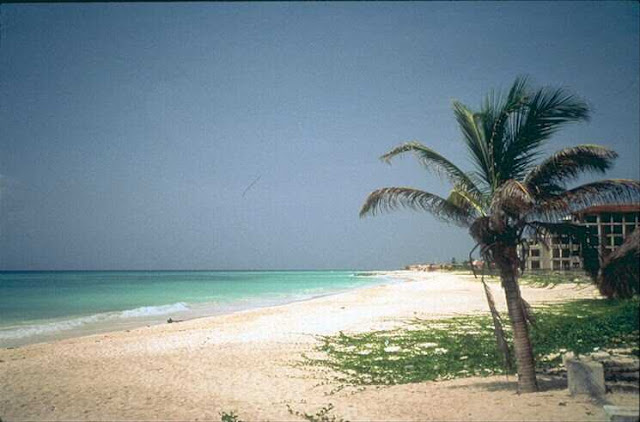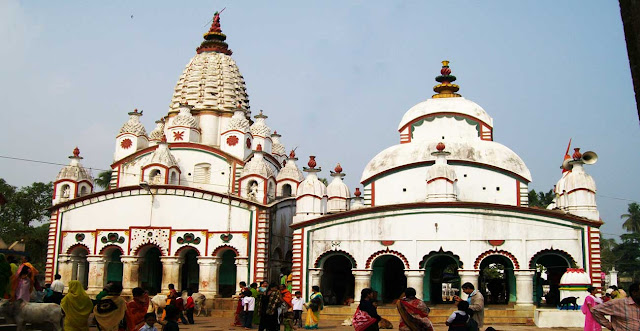Dear Friends now i discuss about a beautiful place and a beautiful district of odisha. yes it is our sambalpur .Sambalpur is the gateway to the western zone of Odisha. The place has abundant lush green forests and colorful wildlife. One can also find breath taking scenic beauty which comprise of exquisite array of hills, waterfalls of streaming pearls, and other things. Tribal life is very profound in this region and you will experience their culture, folk songs dances. Monuments are also found in this part of the world.
The famous handloom textile work of Sambalpur is internationally renowned. Known as the Sambalpuri textiles, they have unique patterns, designs and textures. Sambalpur has known for some rare places and items.
Lets go to visit our Sambalpur
1 . Hirakud Dam (Longest dam in the world) 16km from Sambalpur) :: Built over river Mahanadi, this is the world's largest earthen dam and one of the longest dam in the world which forms a 35Km long artificial lake as well.
This dam forms a very suitable environment for wildlife and there also is Debigarh Wildlife sanctuary where live common pochard, red crested pochard and many others. There are several beautiful migratory birds which could be seen in the vicinity. Besides there are eco cottages located at the bank near the dam which can be reserved in advance.
The dam is 6 Kms from NH 6 . The nearest rail head is Hirakud railway station (S.E.R) which is 8 Kms from the dam site.
2. Sambaleswari temple :: Shree Shree Samaleswari, the presiding deity of Sambalpur, is a strong religious force in western part of Orissa and Chhattisgarh state of India. On the bank of the river Mahanadi the mother goddess Samaleswari is worshipped from ancient times as Jagatjanani, Adishakti, Mahalaxmi and Mahasaraswati. The region in which the temple is situated has a rich cultural heritage. Sambalpur region is popularly known as Hirakhanda from ancient times. Ptolemy has described the place as Sambalak, Acording to Tavernir, the French traveller, and Edward Gibbon, the English historian, diamonds were exported to Rome from Sambalpur.
3 . Maa Ghanteshwari temple :: Maa Ghanteshwari temple is a temple in the district of Sambalpur, the western region of Orissa, India. As the name suggests there are bells everywhere.[1] People offer bells to goddess Ghanteswari or the Deity of Bells, after fulfillment of their wishes. A large number of pilgrims from across the state visit the temple. It is known as the 'lighthouse without light', built by the early sailors, for whom the bells served as warning against heavy winds. The special significance of this place lies in the great number of small bells hanging all around.
Maa Ghanteshwari Temple is situated 33 kilometres (21 mi) southwest of the district capital Sambalpur on the bank of Mahanadi River. The Chipilima Hydro Powerplant is located near the temple on the same riverbank.
4. Huma temple :: Huma temple, situated near Sambhalpur, was established in the year 1670. It is believed that the temple was built by the King Baliar Singh, the fifth king of the Chauhan dynasty of Sambalpur. It is popularly known as the Leaning Temple of Huma, as it does not stand upright and is tilted towards one side. Infact, almost everything within the temple complex is skewed. The temple is located on the banks of Mahanadi River, at a distance of about 23 km from the Sambhalpur district of Odisha.
The temple is dedicated to Lord Shiva, one of the Gods forming the Hindu Trinity. There is an interesting legend behind the construction of the Huma temple. People say that there was a milkman, who used to go across river Mahanadi to worship Lord Shiva. He used to offer milk to the Lord everyday. One day, to his surprise, the rock idol consumed the milk offered by the milkman. This miraculous incident paved way for the construction of temple. During Shivratri, a grand fair takes place at the Huma temple
5. Ushakothi :: A spot of an altogether different hue is Ushakothi wild life Sanctuary, 43 Kms. North-East of Sambalpur on NH.6. Stretching for more than 130 Kms., the Sanctuary harbours Elephants, Tigers, Gours, Sambars, Black Panthers, Deer, Spotted Deer, and Wild Bears etc. The two watching towers located near the saline tank inside the Sanctuary enable the visitors to catch a view of these animals.
6 . Pradhanpat :: The Pradhanpat Falls is located at a distance of 100 Kilometers from Sambalpur and also at a reasonable distance from the city of Deogarh. The Pradhanpat Falls is a picturesque waterfall which is surrounded by some of the rarest scenic sights of nature which makes it one of the most beautiful waterfalls of Odisha.
7. Chipilima powerhouse :: A combination of both Hirakud Dam and Huma Temple is Chiplima, about 37 Kms. from Sambalpur. An ideal picnic spot, Chiplima is known for a natural fall (24.38 mts. In height) harnessed for generating electricity. It is also known for harbouring Ghanteswari, the presiding deity of the place. Moreover, the State livestock Breeding Farm and Agricultural Farm are located here.
8. Cattle island :: It is situated near the Kumarbandh village which is about 90 kilometers from the Sambalpur town. Forming part of a submerged hill, this island used to be a developed village until the construction of the Hirakud Dam started. The place derived its name from the fact that all the animals that inhabited the place belonged to the cattle group. During the resettlement period, the folks left the animals on their own. As the time progressed, the cattle grew stronger and grew wilder. They are bigger than the normal cattle. People have tried to capture them but have failed to do so.
9. Koili 9 ghughar :: A scenic spot and beautiful waterfall, famous for its underwater shivalingam) around 106km from Sambalpur.
10. Harishankar :: Sri Sri Harisankar Devasthana is a temple on the slopes of Gandhamardhan hills, Odisha in India. It is popular for its scenes of nature and connection to two Hindu lords, Vishnu and Shiva. As a holy place, along with a stream passing on the granite bed, it has given some visitors a feeling of peace. On the opposite of side of the Gandhamardhan hills is the temple of Nrusinghanath. The plateau between the two temples has been found to have ancient Buddhist ruins, which are considered to be remnants of the ancient Parimalgiri University.
































